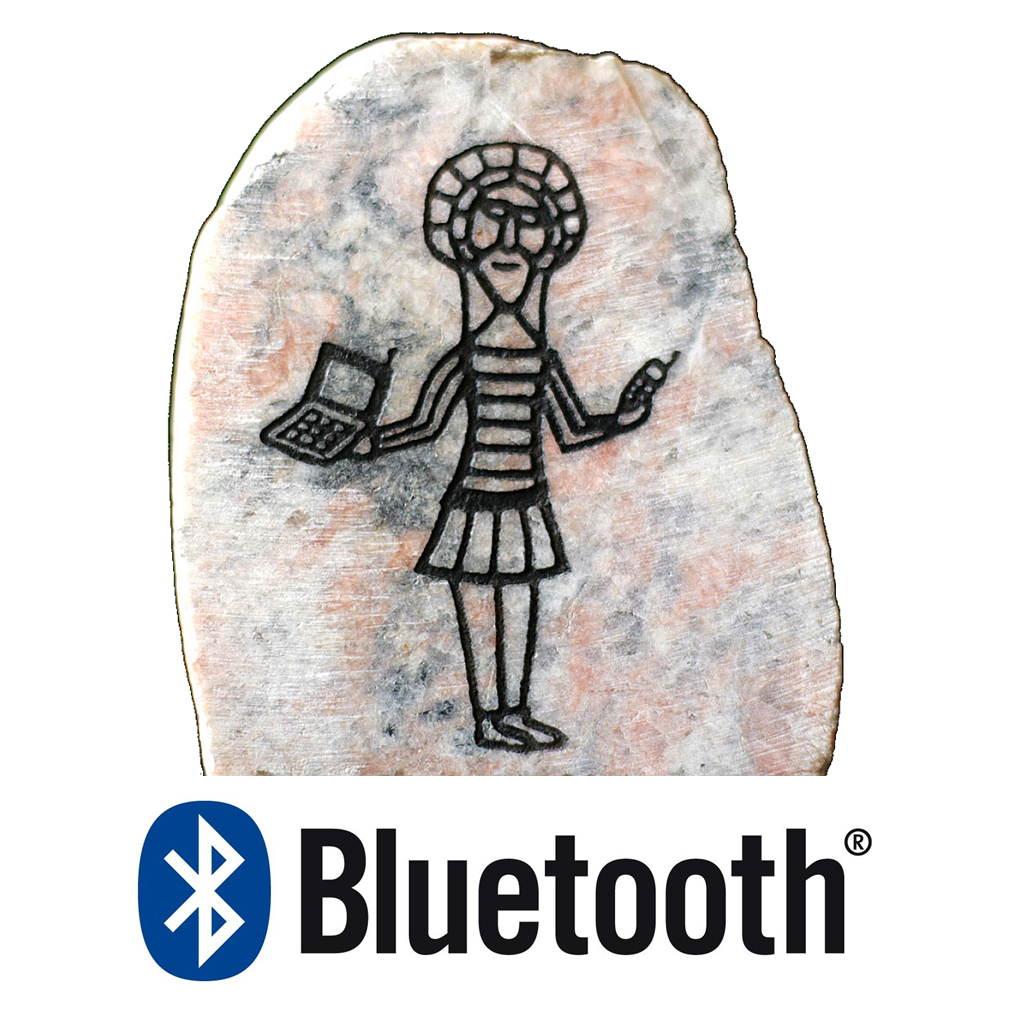
Here’s a fun fact: the technology we know as Bluetooth was named after a Viking king called Harald Bluetooth. King Harald’s real last name was Gormsson for he was Gorm’s son and a lot of Viking last names were like that. It was also pretty common for Vikings to give their rulers interesting nicknames that described something about that person, such as Ragnar Shaggy-Breeches, Bjorn Ironside, Ivar the Boneless, and Sigurd Snake-in-the-Eye. In Harald’s case, one of his front teeth was rotten and looked blue—hence the nickname Bluetooth.
King Harald was a pivotal character in Scandinavian and Viking history who ruled from about 958CE–986CE, which was at the tail end of the Viking Age. The Viking Age lasted for about 300 years, from around 800CE—1050CE and was a time when Vikings were at their peak in terms of worldwide exploration and European terrorization. Vikings were fierce and famously merciless warriors that invaded many areas of Europe, killing, robbing, killing, burning villages, destroying churches, killing more people, and taking Europeans as slaves.
Interestingly, the Vikings weren’t a unified people, nor were they very good at working together. The Vikings were mostly made up of various warring tribes who attacked each other at least as often as they attacked non-Viking Europeans. Most Vikings lived in a region called Scandinavia, which, today, refers to the countries of Denmark, Norway, and Sweden.
Harald was the first Viking king to bring both Christianity and unity to the Viking people and it seems that Christianity and tribal unity were responsible for bringing an end to the Viking Age. Consequently, you might say that King Harald Bluetooth ushered in the end of the Viking Age. Before 1050CE, most Vikings were pagans who worshiped gods like Odin and Thor. King Harald was one of the first well-respected Viking kings to convert to Christianity. He encouraged the people he ruled over to convert to Christianity as well. Then he started to unite the other Viking tribes in Denmark under his rule. Harald Bluetooth became known as the king that united Denmark. Then, so the rest of the world would remember how great he was, King Harald erected a monument to himself in Jelling (YELL-ing), Denmark known as the Jelling Stones. The stones feature Viking runes (a type of writing that uses symbols) that describe the great deeds of none other than the fantastic King Harald Bluetooth himself. Today, the stones are considered to be Denmark’s birth certificate and are a World Heritage Site.
Fast-forward about one thousand years to the mid-1990s when wireless communications are becoming popular. Cellphones have moved from being brick sized to, well, being less than brick sized. Technology companies are all independently working on short-range, wireless devices that can connect computers with cellphones and other equipment. Unfortunately, each company is inventing its own system and device—this means that each company’s device will only be compatible with its own products. The companies realize that flooding the market with lots of similar, yet incompatible devices will greatly confuse and annoy customers. In general, it is highly unusual for technology companies to work together, but they recognize that if they do work together, they can create one device that is compatible with all computers and cellphones—something that will greatly appeal to customers.
Intel is one of the companies helping to develop the new device and Jim Kardach is one of the Intel engineers working on the project. He recently learned about the story of King Harald Bluetooth and thinks that “Bluetooth” is a great code-name for the project because the technology they are developing is uniting the tech companies in the way that King Bluetooth united Denmark.
Soon all the companies working on the project are calling it the “Bluetooth” project. Bluetooth is far catchier than some of the other names they’d tried, like Biz-RF or MC-Link. The official name of the device is Personal Area Networking (PAN) and that’s the name the tech companies are planning to call it when they launch the new product. But just before launch the product, the tech companies’ lawyers pan the name PAN because it sounds too generic. Instead, they choose to go with Bluetooth, which sounds way cooler.
The familiar Bluetooth logo is made up of Harald Bluetooth’s initials using the ancient runes for H and B. When you combine the two runes, they become the Bluetooth logo. It’s kind of a beautiful story of unity, really: King Harald Bluetooth united Denmark, developing the Bluetooth technology united the tech companies, and Bluetooth technology unites our cellphones with our computers and many other devices.



 About BeeLine
About BeeLine